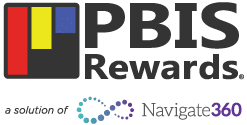Diverse backgrounds and cultures often meet in the classroom, as immigrant families – both first-generation and native-born – retain many of the traditions and worldviews of their country of origin. In order to provide the most effective learning environment for all students, schools often focus on creating a culturally responsive classroom and school climate.
What is Cultural Responsiveness?
Acknowledging the variety of cultural values and experiences is the foundation of cultural responsiveness. In the classroom, this involves inclusivity, curiosity, recognition, and dignity. Cultural responsiveness is the ability to learn from and relate respectfully with people of one’s own culture as well as those from other cultures. Culturally responsive schools offer a learning environment where every student’s cultures, languages, and life experiences are acknowledged, validated, and celebrated. They are also positively reflected in the curriculum and instructional methods.
Creating a Culturally Responsive Classroom Environment
Cultural responsiveness is an intentional process that helps to establish a dynamic, inclusive classroom. Here are five features that make a culturally responsive classroom effective:
Diverse Environment
Consider the variety of backgrounds and cultures represented in the classroom. Does the classroom library include books from authors of different races? Do the bulletin board and the visuals used in teaching reflect a variety of races and cultures? Do students see their backgrounds represented in a positive manner in the curriculum?
Recognition
Students from diverse backgrounds and cultural traditions want to be accepted even though they may be different from the “norm.” While they are learning from you, you can also be learning from them. While it’s important to build relationships with every student in your classroom, making an effort to learn more about those from different cultures will help them to feel seen and valued. This includes (but is not limited to) learning to pronounce and spell names and being respectful of cultural differences.
Encouragement
Students from different cultural backgrounds all have knowledge that’s unique to their experience. Encourage them to tap into this cultural capital by drawing on these experiences and using them to relate to classroom lessons. Inclusive teaching can help these students to grasp and absorb the material while also broadening the understanding of different cultures for the entire class.
Community
It’s no secret that the classroom is a microcosm for the larger community. In the classroom, students from a wide variety of cultural and economic backgrounds reflect the makeup of the community beyond your school’s campus. Building community within the classroom has the potential to extend beyond classroom walls. Curiosity and respect between students of differing backgrounds can help to build this community. Look for common ground, provide accommodations where necessary, and engage in dialogue to build understanding.
Celebration
Each student brings certain abilities and strengths to the classroom, and often these are tied to their cultural experiences. An asset-based mindset considers each student’s interests, skills, and responsibilities outside of the classroom and makes these a part of what happens inside the classroom. Celebrate the diversity of experience and culture in your classroom as well as the things that your students have in common.
Learn More About Culturally Responsive Classrooms at PBIScon21
The 2021 PBIS Rewards Virtual Conference (#PBIScon21) will include a special session track focusing solely on Cultural Responsiveness in the classroom. A PBIS initiative can help to promote cultural responsiveness, both in the classroom and schoolwide. Join us June 21-22, 2021 for PBIS: Anytime, Anywhere! and explore our session tracks:
- PBIS Rewards
- Best Practices in PBIS
- Getting Started: PBIS Foundations
- Social/Emotional Learning (SEL)
- Cultural Responsiveness
- Staff/Student Engagement (Teacher Rewards)
- Distance Learning/Rewards From a Distance
Our conference will help educators all over the world to dive deep into all things PBIS, with awesome keynotes and informative presentations from educators just like you. Join us from the comfort and safety of your own home and get ready to take your PBIS knowledge to the next level!
Register for PBIScon21 today!
Register for PBIScon21We Hope to See You at PBIScon21!
Not able to make it? No problem! If you can’t make it to PBIScon21, you can still get a good look at PBIS Rewards software in action. Just request a demo – we’ll set up a live walk-through of our software at a time that works for you!


